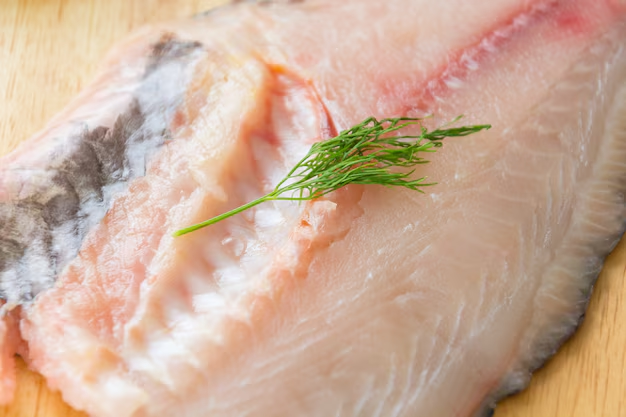How Long Can You Keep Defrosted Salmon in the Fridge?
When it comes to seafood, especially beloved dishes featuring salmon, understanding proper storage techniques is essential. As a fish known for its heart-healthy omega-3 fats and delicious taste, how long can you safely keep defrosted salmon in the refrigerator before it becomes unsafe to eat? Let's dive into this topic and explore all aspects of storing salmon efficiently.
🐟 Understanding Salmon Shelf Life
The quality of salmon can deteriorate quickly if not stored properly. Defrosted salmon should generally be consumed within 1 to 2 days after thawing. This timeframe ensures that the fish remains fresh and safe to eat while maintaining its rich flavor and texture. Leaving fish for longer can increase the risk of spoilage and foodborne illnesses.
The Importance of Temperature Control
Salmon must be kept at a consistently cool temperature. Your refrigerator should be set to 40°F (4°C) or lower to prevent bacterial growth. Monitoring the temperature regularly with a reliable fridge thermometer can ensure that your salmon stays fresh longer.
🕒 Factors Affecting the Shelf Life of Defrosted Salmon
Several factors influence how long defrosted salmon can safely be stored before you should cook or consume it.
Quality of the Salmon
- Freshness at Purchase: Freshly-frozen salmon typically lasts longer once defrosted compared to salmon that was slightly aged before freezing.
- Packaging: Vacuum-sealed packaging protects salmon from air exposure and helps extend its shelf life after defrosting. Look for firm texture and a mild ocean-like smell as indicators of freshness.
Defrosting Method
How you defrost the salmon can impact its longevity. The best practices include:
- Refrigerator Thawing: The most recommended method where you place your salmon in the fridge and let it thaw slowly. This maintains a consistent, safe temperature throughout.
- Cold Water Thawing: Submerging the fish in cold water, changing the water every 30 minutes to ensure the salmon stays cool. This method should be followed by immediate cooking.
Avoid defrosting at room temperature as it promotes uneven thawing and bacterial growth on the surface of the fish.
Storage Conditions
- Use Airtight Containers: Store defrosted salmon in airtight containers to prevent odors from other foods in the fridge from affecting it.
- Keep It Sealed: Ensure that the container or plastic wrap is well-sealed to slow down oxidation and spoilage.
💡 Tips for Storing Salmon Safely
To maximize the freshness of your defrosted salmon, consider these practical tips:
- Avoid Refreezing: Once defrosted, try not to refreeze the salmon as it can degrade the texture and flavor.
- Label and Date: Always label the storage container with the date of defrosting to ensure you consume it within the safe time frame.
- Use It in Recipes: Plan your meals ahead to use defrosted salmon efficiently, and consider incorporating it into a variety of dishes like salads, pastas, or grilled entrees to avoid wastage.
🤔 How Can You Tell If Salmon Has Spoiled?
Knowing the signs of spoilage will help you avoid consuming bad fish. Here’s what to watch for:
- Smell: A strong fishy or ammonia smell is a red flag.
- Texture: Slimy or sticky texture indicates spoilage. Fresh defrosted salmon should feel firm to the touch.
- Color: Any discoloration, such as dullness or dark spots, can be a sign that the fish is past its prime.
When in doubt, the best practice is to err on the side of caution and avoid eating the potentially spoiled salmon.
📊 Quick Reference: Storing Defrosted Salmon
Here’s a handy summary table to keep these key points at your fingertips:
| Aspect | Guideline |
|---|---|
| Refrigerator Life | 1-2 days after defrosting |
| Fridge Temperature | 40°F (4°C) or lower |
| Defrosting Methods | Refrigerator thawing preferred |
| Signs of Spoilage | Strong smell, slimy texture, discolored spots |
| Packaging | Airtight containers for best results |
| Avoid | Room temperature defrosting, refreezing |
🚀 Extending the Life of Salmon
While refrigerator storage is suitable for short-term safety, freezing is the go-to method for long-term preservation. Freezing salmon extends its usability, often for several months. To successfully freeze salmon:
- Wrap it tightly with plastic wrap followed by aluminum foil.
- Label and date the package before storing it in the freezer for optimal rotation and usage.
Cooking and Creativity: Consider exploring different cooking methods and recipes to better use defrosted salmon within the safe timeframe. You can grill, broil, or bake salmon for diverse taste experiences.
Cooking Tips to Keep in Mind
- Quick Cooking: Salmon fillets do not require long to cook, approximately 4-6 minutes per half-inch of thickness. Always ensure it reaches an internal temperature of 145°F (62.8°C) to guarantee it's safely cooked through.
- Flavor Pairings: Enhance salmon dishes with lemon, dill, or garlic — classic flavors that complement the fish’s natural richness.
🏆 Best Practices for Salmon Storage and Use
By following these guidelines and tips, you can enjoy the culinary delight of salmon in a safe and rewarding manner:
- Timely Usage: Plan meals to ensure defrosted salmon is used within 2 days.
- Cool & Consistent Storage: Maintain fridge temperatures and airtight conditions.
- Creative Cooking: Experiment with dishes that capture salmon’s versatility and flavor.
With these practices, not only will you ensure the salmon is safe and delicious, but you'll also make the most out of this nutritious seafood staple. Dive into meal prep with confidence, knowing your defrosted salmon will bring vibrant taste and quality nutrition to every plate.
